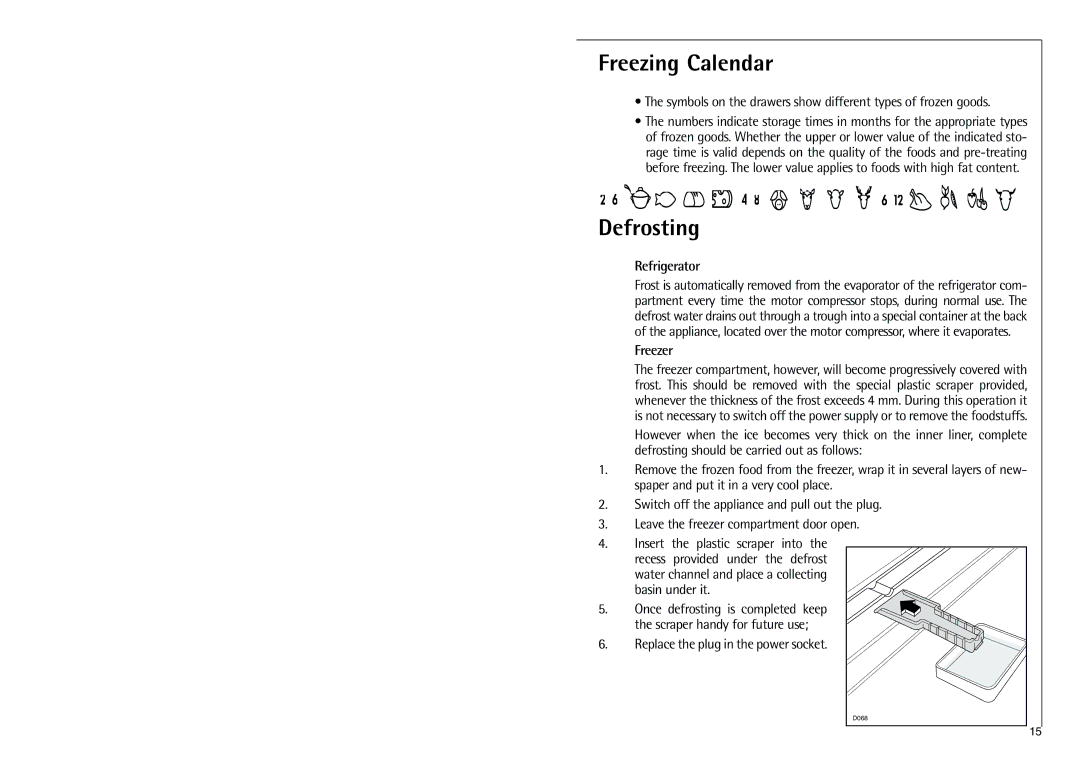
Freezing Calendar
•The symbols on the drawers show different types of frozen goods.
•The numbers indicate storage times in months for the appropriate types of frozen goods. Whether the upper or lower value of the indicated sto- rage time is valid depends on the quality of the foods and
Defrosting
Refrigerator
Frost is automatically removed from the evaporator of the refrigerator com- partment every time the motor compressor stops, during normal use. The defrost water drains out through a trough into a special container at the back of the appliance, located over the motor compressor, where it evaporates.
Freezer
The freezer compartment, however, will become progressively covered with frost. This should be removed with the special plastic scraper provided, whenever the thickness of the frost exceeds 4 mm. During this operation it is not necessary to switch off the power supply or to remove the foodstuffs.
However when the ice becomes very thick on the inner liner, complete defrosting should be carried out as follows:
1. Remove the frozen food from the freezer, wrap it in several layers of new- spaper and put it in a very cool place.
2. Switch off the appliance and pull out the plug.
3. Leave the freezer compartment door open.
4. Insert the plastic scraper into the recess provided under the defrost water channel and place a collecting basin under it.
5. Once defrosting is completed keep the scraper handy for future use;
6. Replace the plug in the power socket.
D068
15
